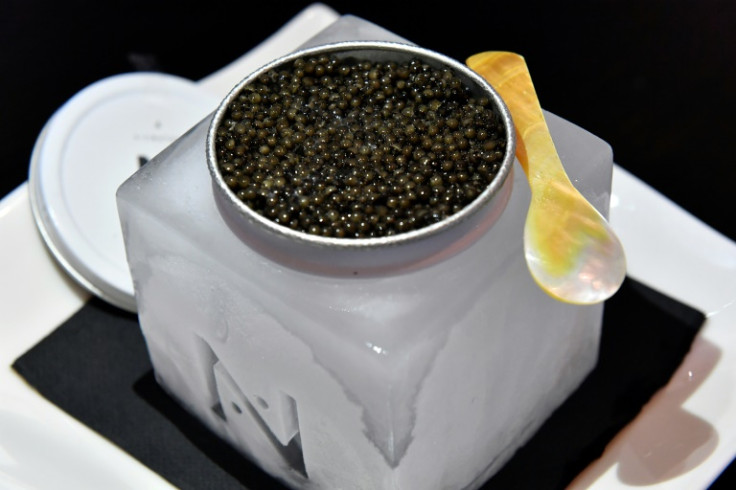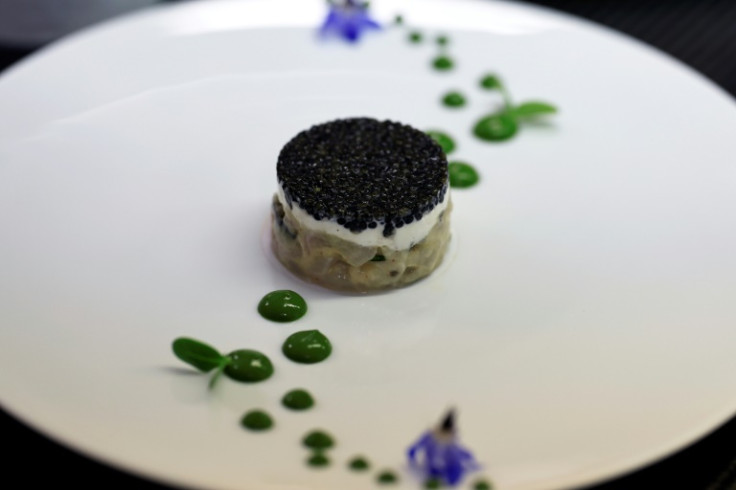Elitist No More, Caviar Is Turning Casual

When Burger King announced it was selling caviar with nuggets at its French restaurants on April 1, many people assumed it was an April Fool's joke.
But as news spread on social media, buyers rushed to try one of the world's most expensive delicacies paired with a humble and highly commoditised piece of deep-fried chicken while limited stocks lasted.
For 19 euros ($22), they got seven nuggets, mayonnaise and a 10-gram (0.35-ounce) pouch of Chinese-origin caviar from the Astana brand, which explained it had worked with the fast-food giant to "make the caviar of chefs available to as many people as possible".
It was a marketing coup -- the story quickly went viral after being picked up by French news outlets -- but it also revealed how the image of caviar as an out-of-reach luxury product is rapidly changing.
As with most new food trends, interest in the exclusive fish eggs is being driven by online influencers and celebrities.
Rihanna posted a video to her 150 million followers on Instagram on December 20 last year showing her eating nuggets topped with caviar.
"I don't like how much I like this," she began.
US celebrity chef David Chang is also a champion, with a 2022 Instagram video showing him dunking a deep-fried chicken leg into a one-kilogram tin of caviar -- "one of my favourite most obscene things to do" -- which racked up more than three million views.
He credits New York chef Wylie Dufresne with first adding it to the menu at his influential WD~50 restaurant in the 2010s.
Last year, the US Open tennis tournament caused a stir by selling a $100 box of six nuggets with caviar created by the luxury Manhattan fried chicken restaurant Coqodaq.
Producers and food writers have mixed feelings about the popularisation of the culinary indulgence, which sells for 1,000 to 30,000 euros a kilogram depending on the type.
The high prices are due to rarity and the high investment producers make in the sturgeon fish needed for caviar, which start to produce eggs only after eight or 10 years.
The most expensive caviar -- the one famously preferred by Hollywood star Elizabeth Taylor -- is the roe of the beluga sturgeon, which takes at least 15 years to mature.
Mikael Petrossian, head of the French brand Petrossian, said there was a "demystification" of caviar underway.
"Caviar doesn't necessarily have to come in a large tin with silver serving pieces... You can enjoy the product in a much more relaxed way," he said. "I personally like eating caviar with crisps."
The founder of French caviar producer Neuvic, Laurent Deverlanges, says his company also aims to make it "less formal".
He posted a review of the "King Nugget Caviar" menu online, concluding that "it works, even if you can't really taste the caviar much".
But Olivier Cabarrot, the head of the France-based Prunier brand whose caviar restaurant is one of the most famous in the world, pushes back on the idea of it becoming a regular product.
"In terms of gastronomy, there is nothing as expensive. It's hard to talk about it becoming 'democratised'," he said. "But we can speak of greater accessibility, achieved through the sale of smaller quantities rather than lower prices."
Many distributors including Petrossian and Prunier offer tins of 10, 20 or 30 grams, helping to attract a younger clientele.
Remi Dechambre, a food journalist at Le Parisien newspaper, said people associated caviar with opulence and refinement less and less.
"We've completely moved on from that... Consumption has become a little more common, a little less formal -- even though it still makes people dream," he told AFP.
But knowing how to enjoy the product properly remains essential, said Francoise Boisseaud, managing director of the supplier Le Comptoir du Caviar.
"There's a whole education to be done," she said about the different types -- baeri, oscietre, sevruga or beluga -- adding that "the richness of the world of caviar is infinite -- just like wine".
For her, the best way to enjoy it is with a crusty baguette and butter, not with fried chicken or crisps.
Robin Panfili, a food journalist who runs the food blog "Entree, Plat, Dessert", said Burger King had pulled off a "marketing trick".
"By trying to bring together two worlds that are completely opposed -- luxury and fast food -- the aim is to shake up the codes, to demystify a product historically seen as luxurious and elitist. It's visual, it's viral, it sparks discussion because it's provocative," he told AFP.


© Copyright AFP 2024. All rights reserved.





















